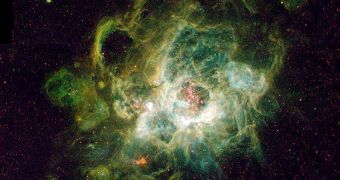Physicists at the US Department of Energy's (DOE) Brookhaven National Laboratory (Brookhaven Lab) say that they may have found a solution for efficiently storing hydrogen. This discovery could have significant practical applications, especially for developing electric vehicles with a longer range.
Scientists have been trying to find a way of storing large amounts of molecular hydrogen (H2) gas in materials that are also capable of being fueled and refueled at high speed, but thus far their efforts have fallen short of achieving a good balance between these factors.
H2 is a clean and powerful fuel. If used correctly in electric vehicles, it could provide a significant amount of power to a motor, while eliminating only water as a byproduct. Its main disadvantage is its extremely-light weight, which makes it very difficult to store and handle.
More often than not, scientists store it in high-pressure tanks. But the DOE launched a call to the scientific community a couple of years ago, calling for the development of a new storage system that would enable wide-scale practical applications.
The Brookhaven Lab group believes that using naturally-formed frozen cages could represent a good way to go about doing this. Details of their approach appear in the March 18 issue of the top scientific journal Nature Chemistry.
According to the research group, which was coordinated by chemist Etsuko Fujita, a newly-developed catalyst is the key to a successful reaction. The group's main advantage over other researches was that it managed to view acids and bases as carriers of hydrogen fuel.
In order to create the catalyst, the team combines hydrogen gas with carbon dioxide, creating a mildly-basic solution. By adding a small amount of acid, this reaction can be reversed, and the H2 released.
Both chemical reactions can take place in a water solution at low temperatures and pressures, while producing no toxic byproducts. The speed at which the reaction occurs is also higher than any other catalyst is capable of sustaining.
The team will continue to refine its new approach. If successful, we could expect to see vehicles powered by this hydrogen storage system roaming the streets within a decade or so, EurekAlert reports.

 14 DAY TRIAL //
14 DAY TRIAL //